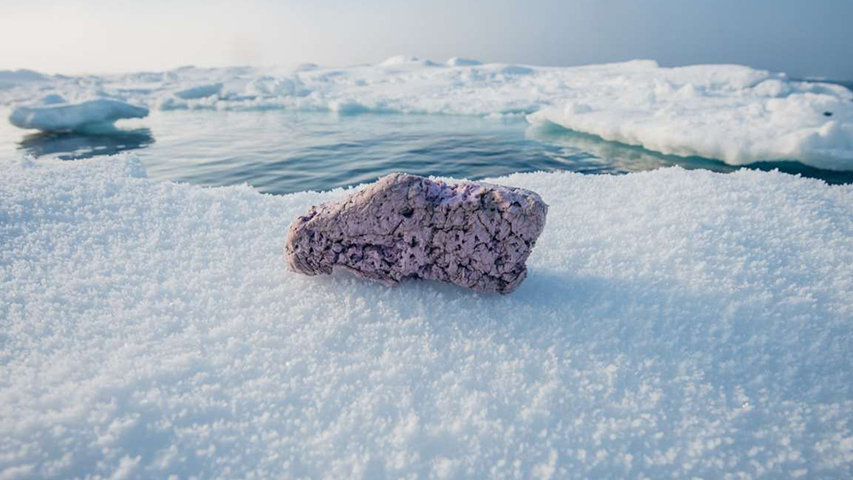
Microplastics Take Over the Arctic
by Yash Saboo April 30 2018, 5:16 am Estimated Reading Time: 2 mins, 37 secsThe oceans all over the world are flooded with tons of plastic. Many must have heard of the great Pacific garbage patch, a slowly swirling gyre of thousands of tons of plastic. But that plastic is not just in this garbage patch, it’s in every major lake and ocean, and what's more alarming is the fact that now it's present even in the high Arctic.
As plastic breaks down, it is not “absorbed” into the environment but merely breaks into smaller and smaller pieces.
A recent research team found that even in the distant Arctic, the microplastics are not only present, but the water and ice are chocked full of the tiny particles. The study found that even a chunk of Arctic ice that can fit in your hand, about a litre in volume, can hold as many as 12,000 bits of microplastic.
The study was published in the journal Nature Communications under the title “Arctic sea ice is an important temporal sink and means of transport for microplastic”.

Source : Green Once Again
Researchers from the Alfred Wegener Institute in Germany found some 17 different types of plastic particles ranging from polystyrene, nylon, polyethylene, polypropylene. Plastics used in plastic bags, bottles, fishing ropes, clothing, food containers and cups, even paint chips and fibres from cigarette filters.
Things like paint chips from ships, plastic bits from fishing nets, and cigarette filters are also indicative of increased human activities in the Arctic they said.
"More than half of the microplastic particles within the ice were so small that they could easily be ingested by sea life," said Ilka Peeken of the Alfred Wegener Institute. "No one can say for certain how harmful these tiny plastic particles are for marine life, or ultimately also for human beings," she said.
The ice cores were gathered from five regions throughout the Arctic Ocean in the spring of 2014 and summer of 2015. They were taken back to the laboratory, where they were analysed for their unique plastic "fingerprint". "Using this approach, we also discovered plastic particles that were only 11 micrometres across," said co-researcher Gunnar Gerdts, also from the Alfred Wegener Institute.
"That's roughly one-sixth the diameter of a human hair, and also explains why we found concentrations of over 12,000 particles per litre of sea ice - which is two to three times higher than what we'd found in past measurements." The study confirms that sea ice traps large amounts of microplastics and transports them across the Arctic Ocean. The plastic particles will be released back into the ocean when the sea ice melts.
"As climate change will accelerate sea ice melting, more microplastics will be released from the sea ice and will enter the marine environment," said Dr. Pennie Lindeque, lead plastics scientist at Plymouth Marine Laboratory, who was not part of the research team.
What happens to plastic then, is unclear -- do the particles remain in the Arctic, are they transported to waters further south, or do they sink? Other studies have recently warned that humans are ingesting microplastics in shellfish, tap water, and bottled water.
The health risks are deadly yet remain unclear.




-173X130.jpg)
-173X130.jpg)
-173X130.jpg)
-173X130.jpg)
_(1)-173X130.jpg)

-173X130.jpg)
